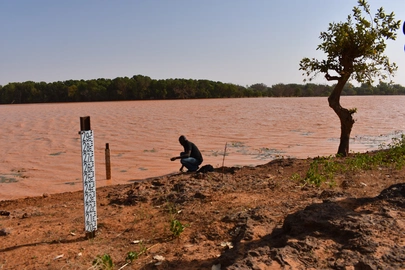Overcoming challenges of water management in Niamey, Niger: RARSUS project focuses on sustainable urban resources supply
May 06, 2020.
The project ‘Risk Assessment and Reduction Strategies for Sustainable Urban Resource Supply in Sub-Saharan Africa (RARSUS)’ aims to strengthen the resilience of urban supply systems. ZEF’s role in this consortium is geared towards sustainable water management in the urban and peri-urban zones of Niamey.
Flood management in small urban river basins is challenging everywhere in the world, but in most of Africa the situation is especially difficult. Oftentimes, there is a lack of data on the smaller scales. In addition, the very quick response of small water basins to intensive rainfall implies that a flood can follow almost immediately after heavy rainfall. This is even intensified in urban areas where buildings and roads take up most of the available space. Limited availability to store water poses an additional challenge for Africa’s densely populated urban areas.
First aim: Flood management concepts for Niamey
Our study looks into Niger’s capital Niamey, one of the fastest growing cities worldwide. Areas close to water resources are heavily contested, mainly for housing and vegetable gardening. The first aim of this research was to advance flood management concepts within Niamey. We analyzed flood-coping mechanisms in a small urban basin of about 60 km², which is almost completely located within the city borders, and conducted a flood risk assessment and management study using hydrological modeling, monitoring and statistical analyses. We were able to develop better flood-management strategies for Niamey by strengthening the storage capacities for excessive water outside of the city where more space is available, by upgrading the hydraulic capacity of the drainage system in the city during heavy rainfall, and by enhancing infiltration as well as roof-water harvesting in the city. These measures should be taken in combination with early-warning systems and awareness raising within the population.
Second aim: Strengthen irrigation facilities
The study’s second aim was to strengthen the small and medium-scale irrigation facilities in the urban and peri-urban zones of Niamey. Our results show a huge potential for water saving as gross water input by far exceeded the crop water requirements. This water saving potential can be mobilized via improved irrigation-scheduling and advanced handling of irrigation techniques without lowering yields (thus resulting in productivity gains). Improving irrigation schedules in Niamey’s medium-size rice irrigation schemes therefore creates a win-win situation in terms of water and energy saving, because a huge share of the irrigation water is pumped from the river Niger.
Remote-sensing, modeling and capacity development
Use of remote-sensing techniques enabled us to develop a high spatial-resolution land-use map of Niamey. This information provides valuable input to hydrological and water-management modeling and can support the integration of water-management concepts into future spatial-planning. The research activities were carried out in close connection with capacity building measures via an online Summer School and e-learning materials. Moreover, we integrated research conducted by Master students of the Abdou Moumouni University of Niamey. The participation of local and regional students in the project means that its impacts are more likely to be sustained once the project ends.
About the authors
Sarah Verleysdonk, Navneet Kumar, and Bernhard Tischbein are researchers at ZEF
For more information about the RARSUS project see: rarsus.com
This article is from ZEFnews 40. For the full issue see:
https://www.zef.de/fileadmin/user_upload/ZEFnews_no40.pdf



